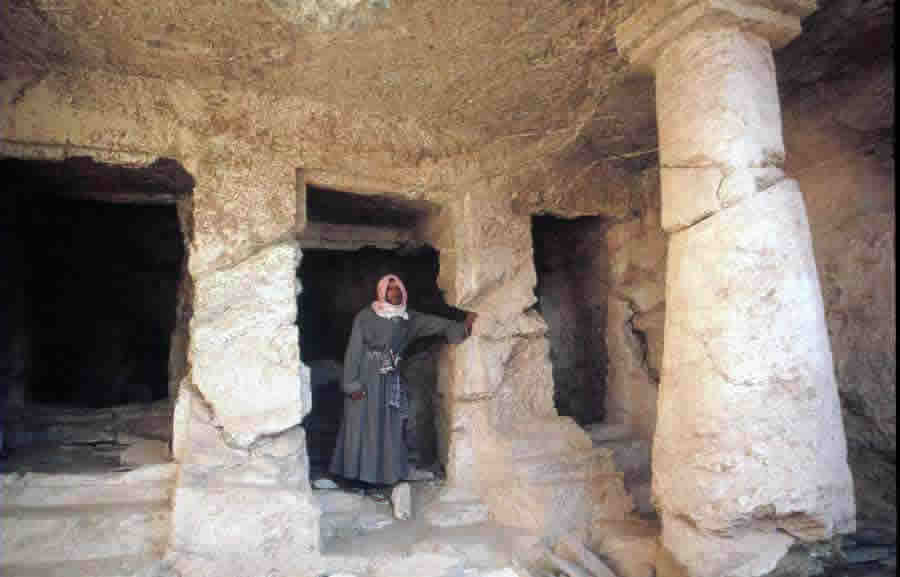

Inside
the big rock temple of Sikait
…ivory clothed the hall, and fixed upon the doors with labor rare shells of the tortoise gleamed, from Indian seas, with frequent emeralds studded. Gems of price and yellow jasper on the couches…There in her fatal beauty lay the Queen thick daubed with unguents…laden she lay on neck and hair with all the Red Sea spoils, and faint beneath the weight of gems and gold.
Lucanus, Roman poet (39-65 AD)
De Farsalia, X.
Marble
buste of Queen Cleopatra VII
No known inscription of Cleopatra's reign connects her with the emerald mining area, but texts of the early Roman period in which her preference for the green stone is expressed are manifold. Besides other kinds of precious stones and metals, her palaces were decorated with emeralds. Departing favorite ambassadors were given a giant emerald with her portrait engraved on it. Also according to these stories, Cleopatra often covered herself with emerald jewelry during official occasions. She preferred this gemstone in fact, above all others, and made the mines her personal possession, stating that emerald was only fitting for Egyptian royalty. Although evidence is thus far limited, emerald mining in this area during the rule of the Ptolemaic kings and queens is likely. The large rock cut temple in Sikait is typical for the pre-Roman period. And the description by Strabo of Egyptians digging deep mine shafts to collect emeralds, shortly after the dead of Cleopatra, can only be related to this area.